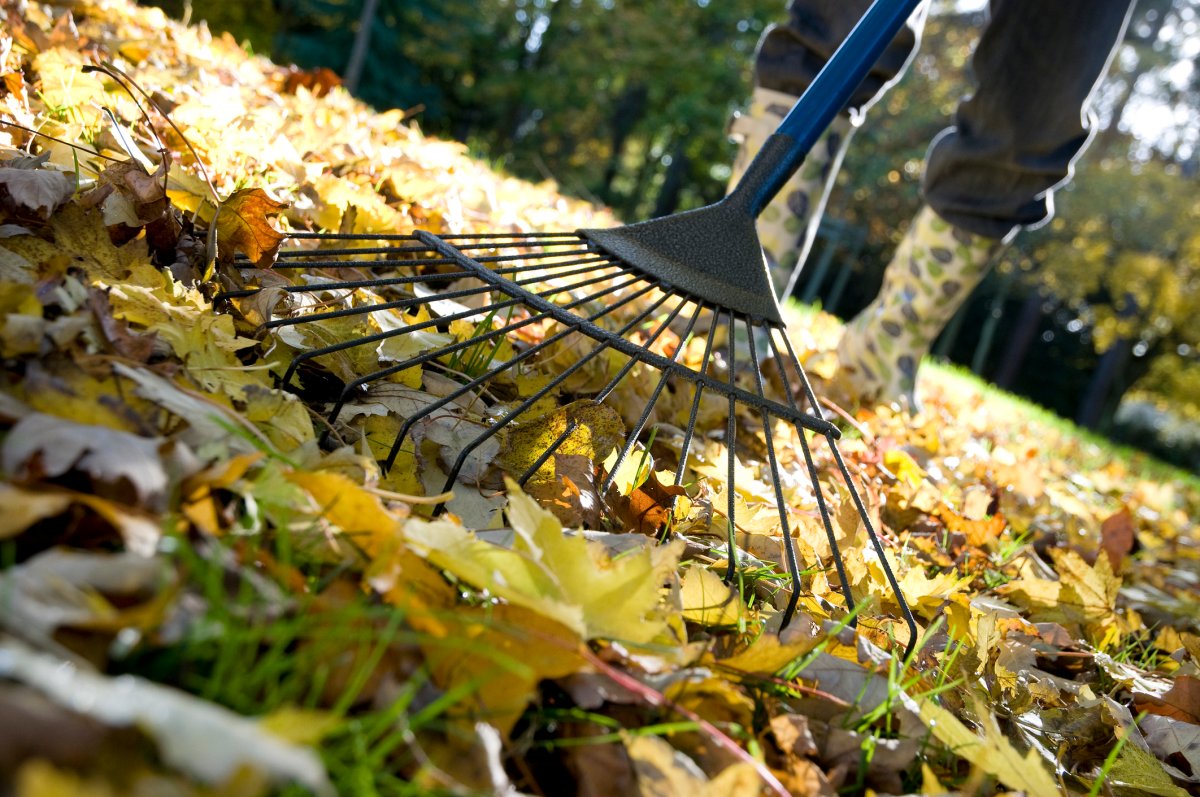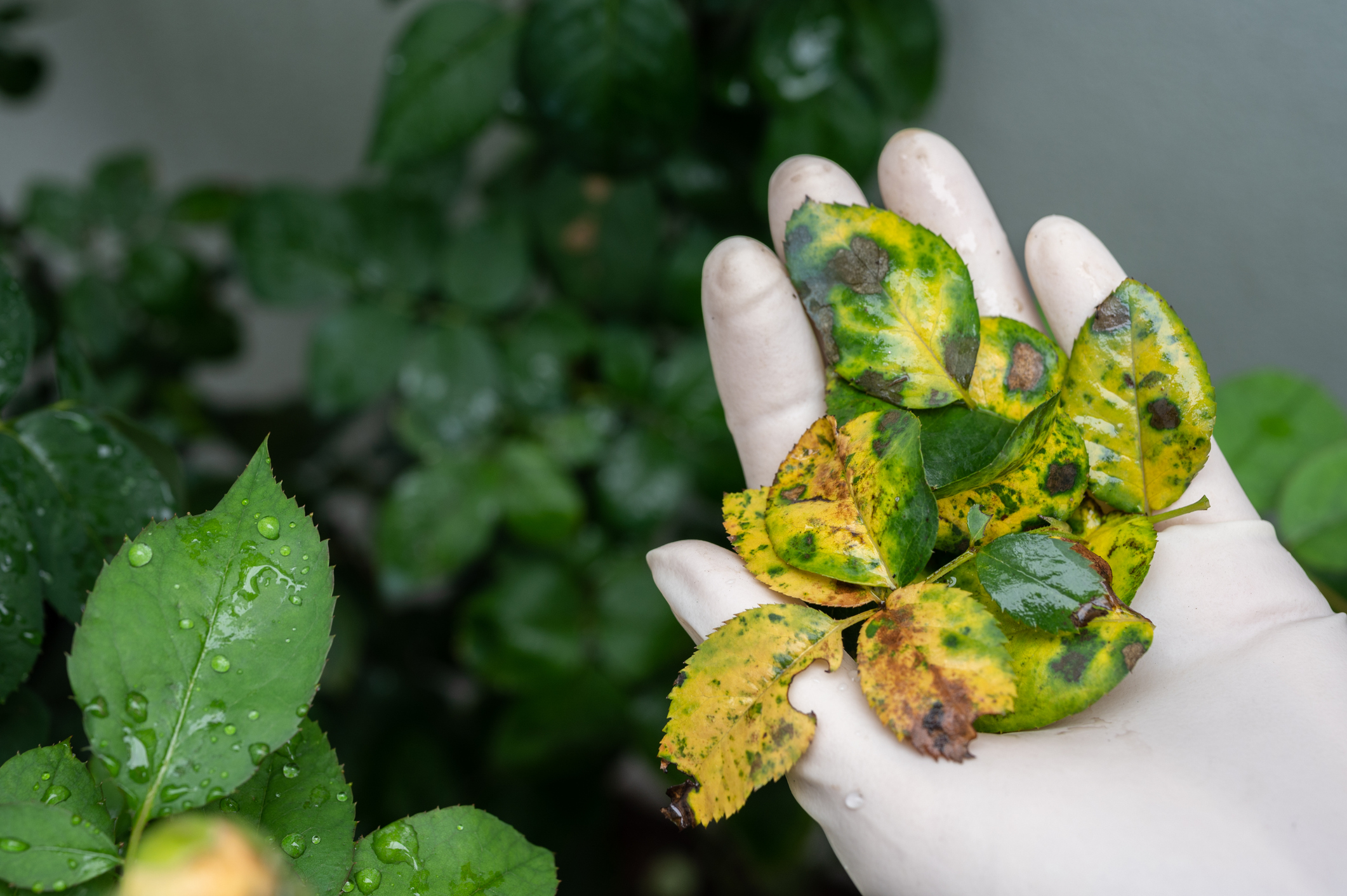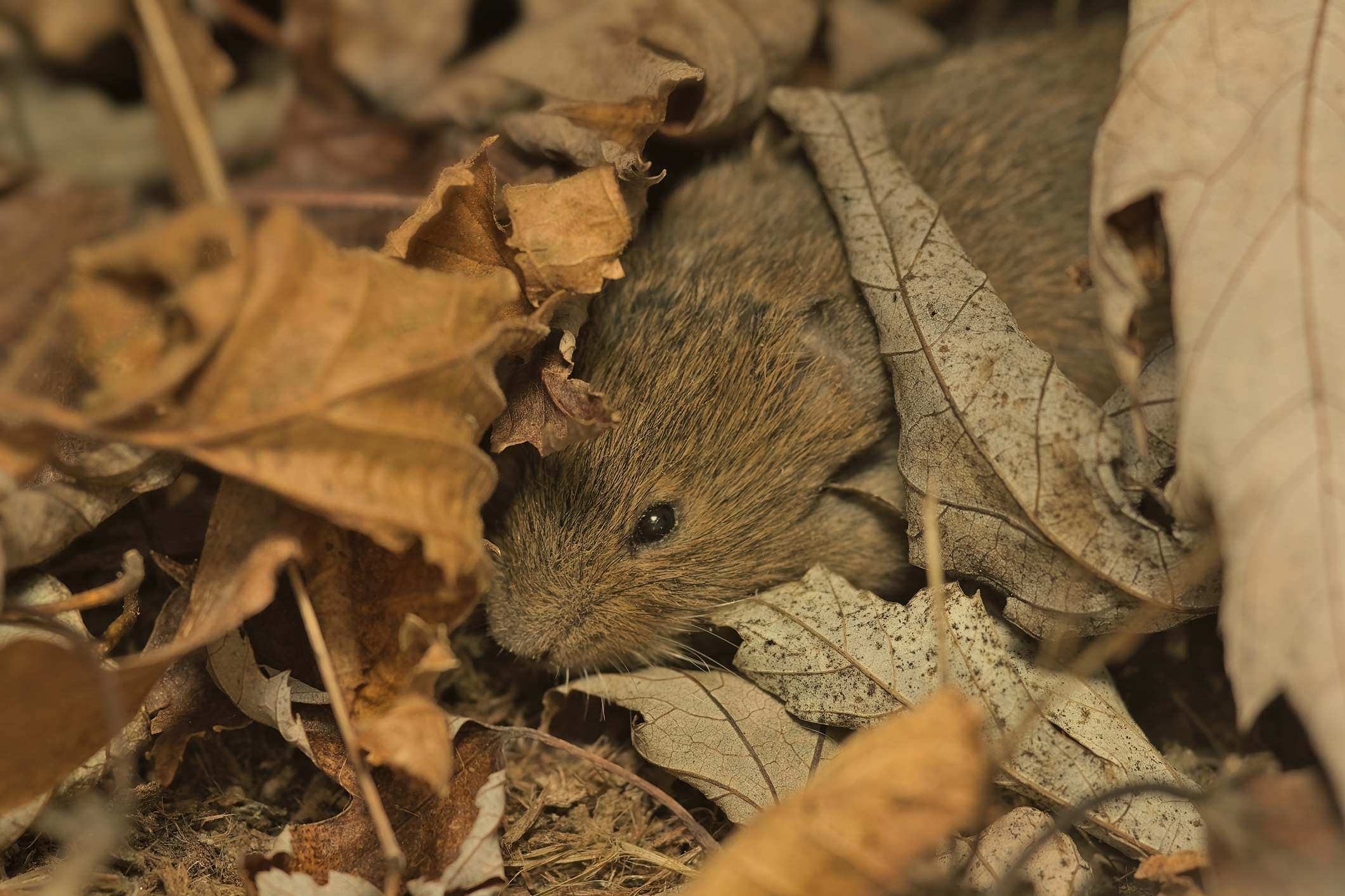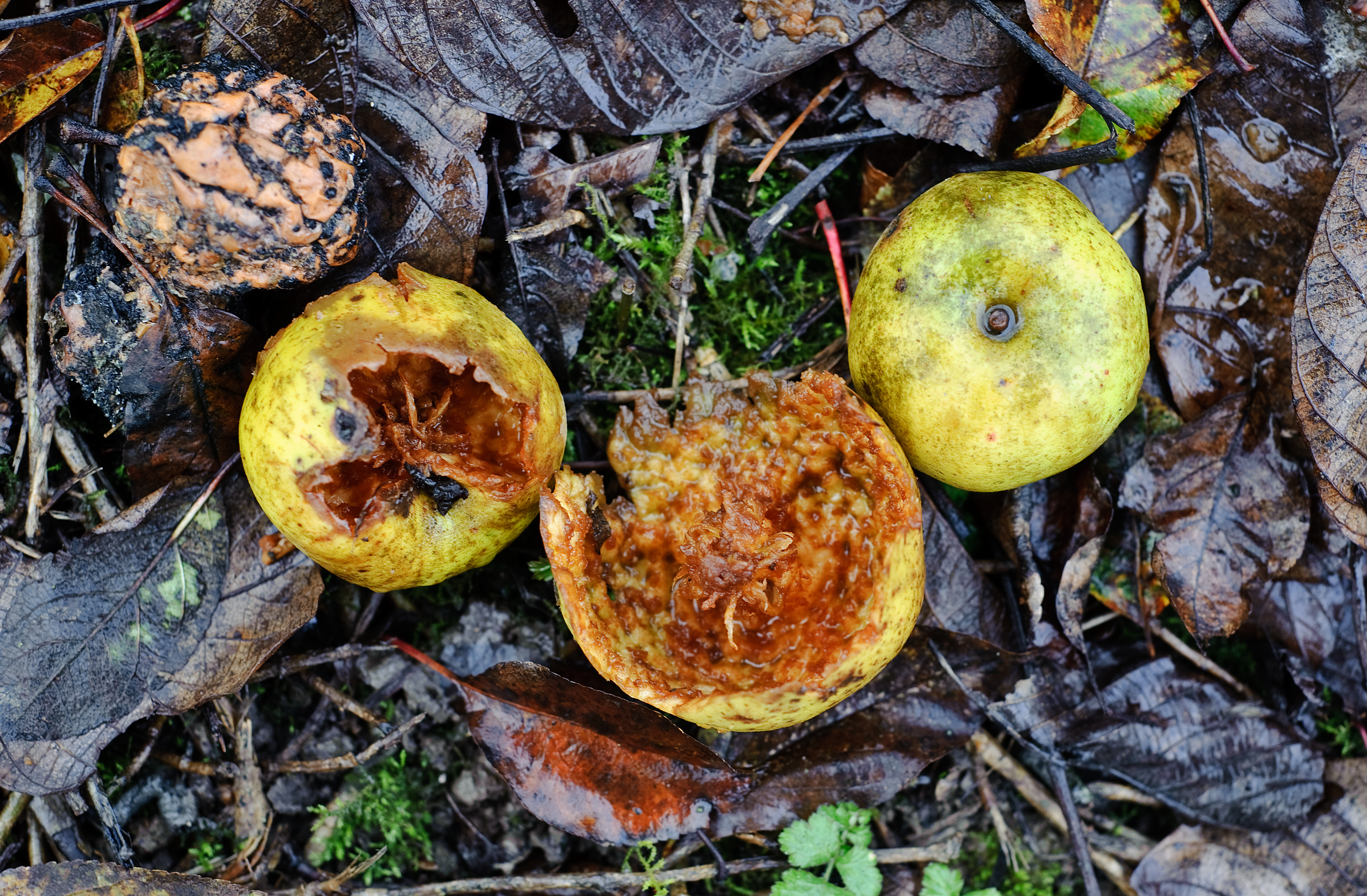

We may earn revenue from the products available on this page and participate in affiliate programs. Learn More ›
While colorful autumn leaves are gorgeous and freshly picked fruit from a variety of fruit trees is scrumptious, both can cause problems in your yard once they fall to the ground. So, while you often hear that mulching fallen leaves in fall instead of raking is good for soil and the ecosystem, take care to check the debris before opting for that approach. According to Susan Poizner, fruit tree expert and founder of Orchard People, leaving fallen fruit and leaves in the yard and garden can cause disease and attract unwelcome pests.
“Fallen leaves can be a good source of nutrients—but only if they’re healthy,” says Poizner. “If they are diseased or infested with pests, you’re basically giving those pests and disease spores a cozy place to overwinter,” she says. If not addressed, these pathogens and pests will multiply and return with a vengeance in the spring.
Learn how to detect fallen leaves overrun by disease and pests, the best ways to dispose of them safely, and steps to prevent this from happening again in the future.

Examine fallen leaves and fruit for disease.
It’s helpful to become familiar with the common disease problems that affect the types of trees on your property, says Poizner. “When you recognize the symptoms early on, you can nip the problems in the bud so they don’t spread.” Common diseases include fire blight, apple scab, rust, peach leaf curl, powdery mildew, and bacterial canker.
When you’re examining fallen leaves, look for signs like spots or discoloration. “For instance, orange spots on leaves often mean rust, while olive-colored spots can be a sign of scab,” notes Poizner. “Puckered or distorted leaves may be due to peach leaf curl.”
Leaf spots are a good indication that a tree has been infected. Almost all trees and shrubs are susceptible to one or more leaf spot diseases. Look for these clues:
- Spots, which can vary in size and color. Brown, tan, black, yellow, yellow-green, orange, and red spots can appear depending on the specific disease and its stage.
- Spots that appear rounded or angular, raised or sunken, and have smooth or fringed edges.
- Concentric rings or dark margins that get larger over time and form blotches. These are problematic.
- Leaves dropping prematurely, a sign of some diseases.

Watch for pests around fallen fruit and leaves.
Fallen leaves can easily attract a variety of insects, rodents, and other pests to your yard since they provide a favorable shelter and nesting location. “Leaves with webbing or curling might indicate pests,” says Poizner. She also explains how fallen fruit can quickly harbor pests. “If you notice fallen fruit that has holes with goop oozing out, it could be a sign of maggots inside.”
Some of the most common pests attracted to fallen leaves include:
- Beetles: Decaying leaves provide a source of food and a cozy spot for beetles since they thrive in environments that are confined, dark, warm, humid, and moist. Although beetles are usually good for a garden, you might not want them migrating into your house if your leaves are near an entrance.
- Termites: These pests often use fallen leaves for shelter because of the cellulose found in them. As leaves start to decay, they release a scent that attracts termites. Termites in your leaf pile can quickly spread to nearby wood, such as in your house.
- Cockroaches: Since they seek warmth and humidity, roaches sometimes use fallen leaves for food and shelter during the colder months. However, they can easily end up infesting your home.
- Spiders: Leaf piles attract food-seeking arachnids, including black widow spiders that are venomous predators looking for smaller bugs often found around leaves.
- Rodents: Beetles are a great source of protein for rodents like mice and rats, so they often end up in leaf piles that already have beetles in them. Plus, rodents seek shelter when temperatures drop.
- Snakes: Just as the rodents hang out in leaf piles to feed on beetles, snakes go after the rodents.
The problem is that these pests may not stay outside in the leaf pile, but eventually work their way into your house. That’s why it’s so important to address this issue right away and not let leaf piles build up for weeks or months at a time.
Safely dispose of diseased or infested organic matter.
Prompt cleanup and disposal is essential in preventing the further spread of disease. “If you’re not great at spotting and identifying disease symptoms, it’s better to play it safe and pick up any organic matter around your fruit trees,” says Poizner. She recommends waiting for the leaves and fruit to fall to the ground naturally and then gathering everything together to put out for municipal leaf waste collection. “If we rake up the fallen leaves and fruit in winter, we can interrupt the pest and disease life cycle and protect our trees without chemicals.” Place the debris in sealed bags and inside covered garbage cans.
Avoid putting diseased leaves and infested fruit in your home compost because those pathogens will just hide in there, Poizner advises. “You need a huge, hot compost pile to kill off pathogens and pests, but home composts rarely get that hot.” Indeed, composting infected botanical matter is risky and challenging; the compost pile would need to be maintained at temperatures between 140 and 160 degrees Fahrenheit and turned often. Even then, some viral diseases can still survive.
Burying the leaves is another option. Some diseases can live in the soil for years, so bury the debris as far away from the garden as possible in an area that you don’t plan to use for garden plants. Dig a hole 1 to 2 feet deep, fill it with plant debris, mix the soil, and then cover it with at least 2 inches of fresh disease-free soil. You can speed up their decomposition by shredding the leaves before burying them, but make sure to disinfect your equipment after doing so to prevent spreading the disease to healthy trees and plants.
Avoid burning leaves, a dangerous and illegal practice in many locations. A slight breeze can carry burning material and trigger a devastating wildfire.

Prevent these issues from happening again next season.
To avoid pests and disease in the future, take preventive measures like keeping your yard clear and treating vegetation. “Fall cleanup is a great start. Rake up meticulously—these leaves and fruits can harbor pests and diseases that could affect your tree again next season,” says Poizner.
In addition, she recommends using dormant spray in early spring before the buds break. “I use a lime sulfur dormant oil mix, which is effective but not the only option. The oil in this mix coats the branches and bark (be sure to spray into cracks and crevices), smothering any insects overwintering on your tree.” This can prevent a lot of pest issues during the growing season. Just remember to read the instructions carefully; applying it at the wrong time or on the wrong tree can do more harm than good.
She also suggests pruning annually to help protect trees from disease because it opens the tree up to better air circulation and sunlight penetration. “That prevents the dark, damp conditions that pests and disease spores love,” Poizner says.
